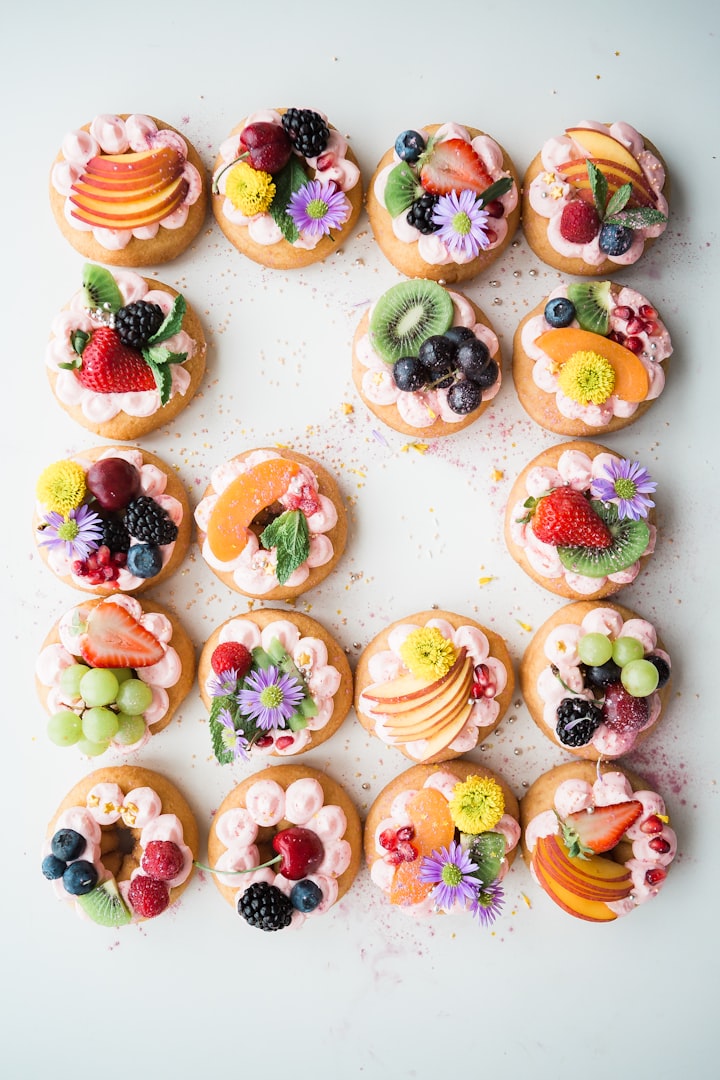Experiencing the Flavor of Haiti
A Short Excursion to an Underappreciated Caribbean Island

“Mwen se manje,” I said to one of my Haitian friends. I had been practicing my Creole, and I was pretty confident that I had nailed this one. At least, I thought I had until my so-called 'friend' doubled over in laughter.
Between fits of unrepressed mirth, he replied,” What did you say? Souple, say it again?” And he leans a bit closer, turning his ear toward me so that he doesn’t miss a syllable. “Say it a little louder this time.”
My pride had taken a hit, but I obliged, saying it loud enough (unintentionally) for the small group of Haitians sitting nearby to hear it also. They were leaning in to see what was so funny.
“Mwen se manje?” I repeated, going higher in pitch on the last syllable and turning my statement into a question.
The crowd went wild. They were all laughing now. The jerks. I couldn’t help but smile. “What did I say?”
“What were you trying to say?” my friend asked, while little bubbles of joviality continued to rise to the surface of his words.
I replied, “I was trying to say, ‘I am hungry.’”
He just laughs some more and shakes his head. “No, no—It’s mwen grangou. But you said, ‘mwen se manje'--I am food.”
Despite the language barrier (ahem), I have been to Haiti several times and have had the pleasure of sampling much of their daily cuisine. In the mountainous region where I've spent most of my time, they eat a lot of fruit that is freshly-picked right off the trees. Did you notice the spiky, green fruit at the top of this page? It’s called soursop, and once it is juiced, it is the most delicious-tasting juice I’ve ever had!
Traveling to Haiti has been a cross-cultural adventure that has shifted my relationship with food in that I am now more open to trying new things. Instead of the boring-old 'I know what I like, and I like what I know,' I now feel a bit more free to let my taste buds do a bit of exploration from time to time (within reason of course--I still steer clear of eating insects).
My Haitian friends definitely burst my little American comfort-bubble when they put me on a motorcycle, and I was sandwiched between two Haitians (both men) for a forty-five minute trek up and down the bumpy roadways. It looked a little bit like the following image (but imagine a skinny, white guy in the middle). This was a bit outside of my comfort zone (vast understatement), but hey, when in Haiti . . .

My wife and I (she went with me, by the way), have also incorporated some Haitian cuisine into our meals at home. Every time we do, it takes us back to Haiti in our minds and hearts, and it stirs up a yearning to go back and see our friends again. Making Haitian food a part of what we do in our own homes is a small way that we can honor the culture that we have been blessed to experience.
While in Haiti (near Bombardopolis, on the north-west side of the island), we shared many meals together with the people there. One of the staples that we had with most meals was fried plantains. Here, let me show you what they look like, so I can set your mouth to watering.

Come with me for a moment, and I’ll show you how they make this Caribbean dish—Haitian style.
Well, come on. Don’t be shy. We just need to go into the trees over here to find some plantains. Whoa, watch out there. You’ll want to keep your distance front those pigs. It’s okay; the big one is tied to the tree.
What’s that? Oh, no, you probably shouldn’t pet the piglets. Momma wouldn’t like that very much.
Ah, here we are—plantains!

The trick is to pick some green ones. You actually don’t want the ripe ones—they’re not as tasty once they've been fried.
While we walk back to the small, concrete-encased kitchen, let me tell you about the other ingredients we will need:
1/2 cup of water, 3 tablespoons of vinegar, 1 1/2 teaspoon salt, oil for frying, and more salt (just for kicks and giggles—to be applied post-frying).
Now that we have all of our ingredients, let’s get going! To begin, peel the plantains and slice them up into good-sized chunks (hey, ‘chunks’ is a technical term, so don’t knock it).
Heat up your skillet on that charcoal fire over there. It’s too hot in this kitchen, you say? Better get used to that in Haiti! Use just enough oil to fry one side at a time. Fry them for about two minutes in one side and then flip them over for another two minutes.
You don’t have paper towels to place them on. Not on the north end of Haiti. Paper towels are a luxury out here. Just use that cloth towel over there. It’s fine. You’ll be washing clothes by hand later with a bar of soap, and you can hand-wash your towel also.

Next, mix up some water, vinegar and salt. Got it? Good. Okay, moving on.
This next bit is highly technical, so take your time if you need to. Ready? What you want to do is take that big knife over there—no, not that one; that’s a machete. We’re not butchering a goat or cutting open a cocoye here. Yeah, that’s the one right there—now smush’em. Yes, that’s right. Just mash down on them suckers with the flat side of the blade. But don’t make them too flat or we’ll be having plantain crispies instead.
Soak the poor, mangled plantains in that water-vinegar-salt concoction for about half a minute.
Half a minute passes.
Now let them dry for a minute.
One minute passes.
Now you throw them back into the frying pan for another few minutes on both sides. Hey, I didn’t say it was a healthy dish, now did I?
Once that’s done, take them out and salt those babies as much as you want and give it a taste. They’re so good! If you really want to go all out, whip up some pikliz to go along with it.
What’s pikliz? Just think of coleslaw, but more vinegary and spicy. If you’re interested in learning how to make it, watch the following video.
Pikliz pairs perfectly with fried plantains! All this talk about plantains and pikliz has my tummy rumbling. And mangoes . . . . Man, I could really go for a mango right about now.
I'm going to go hunt down a mango or three, but before I leave, let me encourage you to do one more thing. You'll never get the full experience of Haitian cuisine unless you go there and try it for yourself. Trust me. It will have a unique flavor when you do, and I don't just mean the flavors that your taste buds experience. The Haitian culture has a "flavor" all its own, and you have to be there to truly understand what I am talking about.
Here, let me leave you with this little travel brochure to whet your appetite. Just take a peek. You won't be disappointed. Oh, and I recommend that you check out the beach at Mole St. Nicholas (a small town on the north-west coast)--you can get some fresh-caught reken (shark) there that will knock your socks off! They serve it up with some fried plantains and pikliz on the side for about twelve bucks, and you can eat while looking out at the gorgeous Caribbean-blue ocean that's just begging you to get your feet wet. So dive in! Make Haiti your next vacation destination, and send me some pictures when you get back!
About the Creator
Jim Sprouse
Husband of a vibrant, generous, and gracious wife; father of a precocious two-year old with a smile that will melt your heart; teacher of high school and college students; and follower after the Great Exemplar—Jesus Christ.






Comments
There are no comments for this story
Be the first to respond and start the conversation.